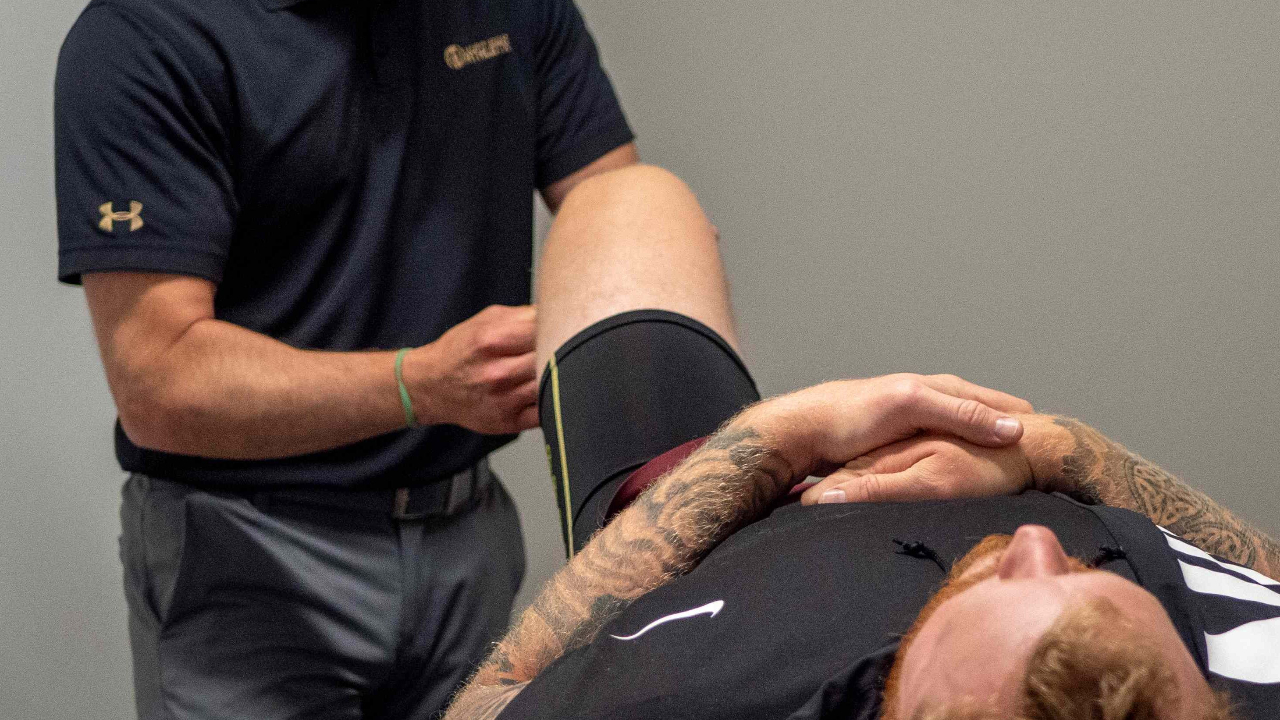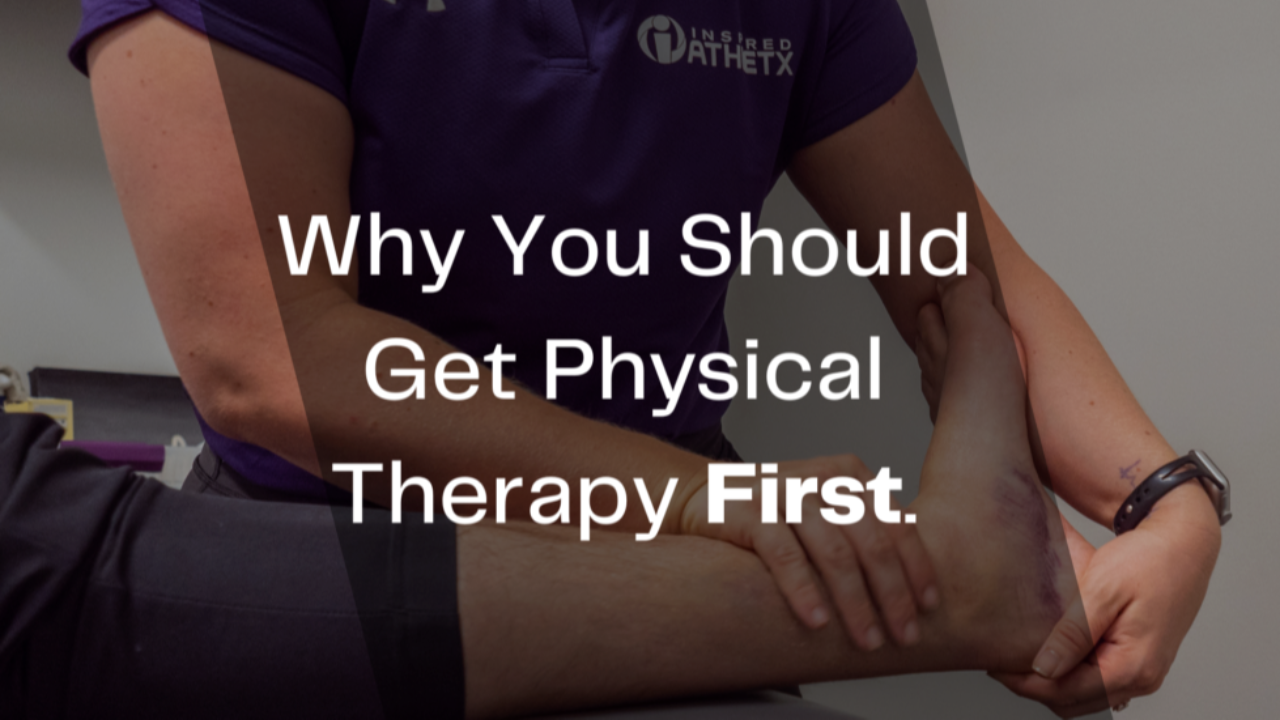
The Role of Nutrition in Injury Recovery
Jul 30, 2020
Nutrition and the foods you eat play an important role in preventing and recovering from injuries. Minimizing muscle loss during injury recovery can be impacted largely by the composition of your diet. Inflammation and weight management can also be attributed to the nutrient density of foods you eat.
The first step of the injury recovery process is an inflammatory response that helps with healing. This is a normal and necessary process of healing for bone and tissue injuries, so temporary inflammation in this case isn’t a bad thing! This process begins immediately after the injury occurs, and swelling may be a common result. Depending on the severity of the injury, a nutrition intervention to reduce inflammation may not be needed (ex. hurting a finger vs. tearing an Achilles’ tendon).
The second step of injury recovery occurs when the athlete starts to resume movement on the injury and it can become weight bearing again. In this situation, calorie needs for the athlete are increased because the body is working harder to recover. Caloric needs in this stage may be closer to someone who is trying to gain lean mass as the athlete is both training and working through an injury.
Increased Calorie Needs
It is often overlooked that athletes have increased calorie needs that can range from 15-50% more calorie needs depending on the severity of the injury. This means increased calories, more protein, and an emphasis on micronutrients and antioxidants. As your body is working harder to heal, it needs more energy through foods. That being said, your RMR (resting metabolic rate) is different during recovery than it was before. If calories are restricted during recovery, healing will be slowed because of the negative metabolic consequences that interfere with wound healing. It is better to slightly overfeed an athlete during recovery than it is to underfeed or undernourish them.
A common thought that occurs to athletes who have decreased their training load during injuries is that they need to drastically decrease calorie intake so they do not gain weight or change body composition. However, there are energy expenditures during recovery that need to be evaluated. Athletes using crutches burn 2-3 times more calories than just walking, and doing rehab through physical therapy uses a lot of energy. Our main goal with nutrition during this time is to prevent deficiencies while providing optimal nutrient needs to prevent muscle loss.
Increased Protein Needs
Muscle degradation is another common result after injuries due to less training, being in a cast, etc., which is another area where purposeful nutrition can help in recovery. Studies have shown that limb immobilization can result in muscle atrophy and loss in lean mass, which is where nutrition intervention comes in. Protein needs from high quality sources increase from being 1.2-2.0g/kg for athletes (or 0.8g/kg for the general adult) to 1.6-2.6g/kg per day (higher for larger athletes who do more weight training vs. an endurance runner. As a general recommendation, aim for about 2.2g/kg, which would be the equivalent of 1g of protein per pound of body weight. Make sure to incorporate leucine into intake by consuming foods like meat, fish, eggs, dairy, and beans. Spreading protein intake throughout the day in 20-40g increments every 3-4 hours is optimal for absorption and building.
Additional nutrients that can be beneficial are creatine, omega-3s, vitamin C, vitamin D, and calcium. Creatine has promising research that it may help with strength improvement and has been shown to prevent a decrease in GLUT4 concentration during immobilization of the injury.
Omega-3s are commonly supplemented during concussion recovery and research supports supplementation to help overcome anabolic resistance and inflammation. However, be aware of supplementing around the time of surgeries if the athlete has already been taking fish oil.
Calcium and vitamin D go hand in hand with bone health. Evidence shows athletes are more likely to get injured when they are getting an inadequate amount of vitamin D. Vitamin D and calcium are both vital to building strong bones and preventing osteoporosis. There is good data showing Vitamin D’s importance in preventing injuries and stress fractures. Supplementing with calcium may not be necessary if you are getting a well-balanced diet with dairy and fortified foods. If you are also supplementing with iron, do not take them at the same time because calcium interferes with the iron absorption.
Free Radicals & Antioxidants
Oxidative stress comes from exercise and injuries, which releases something called “free radicals” that increase inflammation and can damage cells and tissues. These terms may sound intimidating, but have no fear- we have nutrients to help reduce long-term inflammation! Omega 3-s and antioxidants are an important component of your daily nutrition intake and can be found in a wide variety of tasty foods like salmon, avocado, flax seeds, eggs, berries, walnuts, spinach and kale are all great sources. Reduce saturated fat intake (fatty meats, butter, cheese & heavy creams, etc.) to prevent inflammation.
You may have heard that antioxidants help reduce inflammation, but it’s important to know when to increase antioxidants vs. when inflammation is actually helpful in the recovery process. What is the best way to limit inflammation through eating habits? Following a well-balanced diet with different types of fruits, vegetables, whole grains, lean meats, and seafood, and nuts and seeds. If you don’t like seafood or don’t typically eat at least 2 servings per week, or have many sources of omega-3 rich foods in your diet, supplementation may be helpful to ensure adequate intake of the omega-3s EPA and DHA.
Tart cherry juice: The Collegiate and Professional Sports Dietetics Association (CPSDA) recommends consuming 12 to 24 ounces per day to reduce inflammation and provide an abundance of antioxidants. Tart cherry juice is a great source of antioxidants and polyphenols, and it can be found in either a concentrate or in bottles (ex. Cherrish and Cheribundi). Research on tart cherry juice has also shown to lower blood pressure and LDL cholesterol.
Collagen
This is another hot topic that comes up quite a bit. Collagen is the most abundant protein in your body, and it helps with remodeling tissues and improving elasticity in your joints. Something to know while considering collagen is that vitamin C helps with collagen synthesis, so try pairing it with citrus fruits, strawberries, tomatoes or peppers to optimize use.
While you can get enough collagen through a well-balanced diet, research on supplementation shows that supplementation can be beneficial for athletes who suffer with activity-related joint pain. Collagen is also found in protein-based food sources like seafood, chicken, beef, or bone broth, so if you are eating a balanced diet, supplementation is probably not necessary.
Lastly, another factor to consider in the recovery process is alcohol consumption. For athletes who are legally of age and are recovering from injuries, it is recommended to avoid or really limit alcohol consumption during the healing process. Alcohol can impair wound healing and increase muscle loss, so reducing intake is beneficial for recovering quickly.
Take care of your body as it is working hard to heal! Proper nutrition goes a long way when it comes to the recovery process, so stay focused and work with a registered dietitian (like me!) for help along the way. Our goal is to get injuries healed and bodies healthy quickly and as painlessly as possible!




